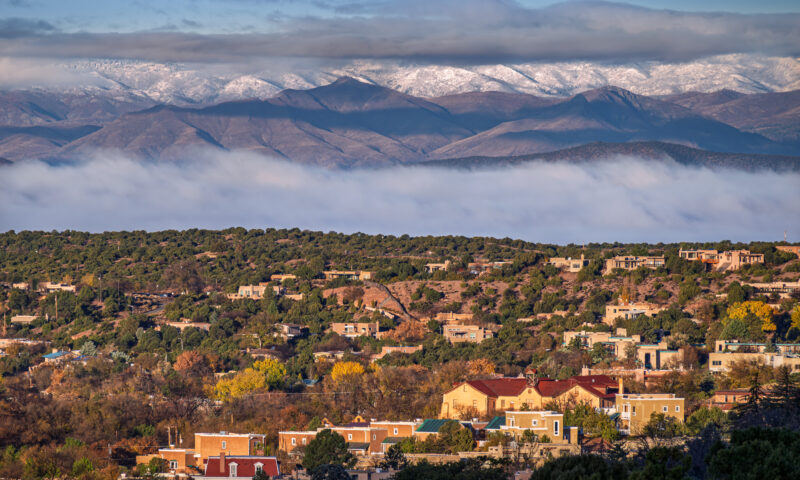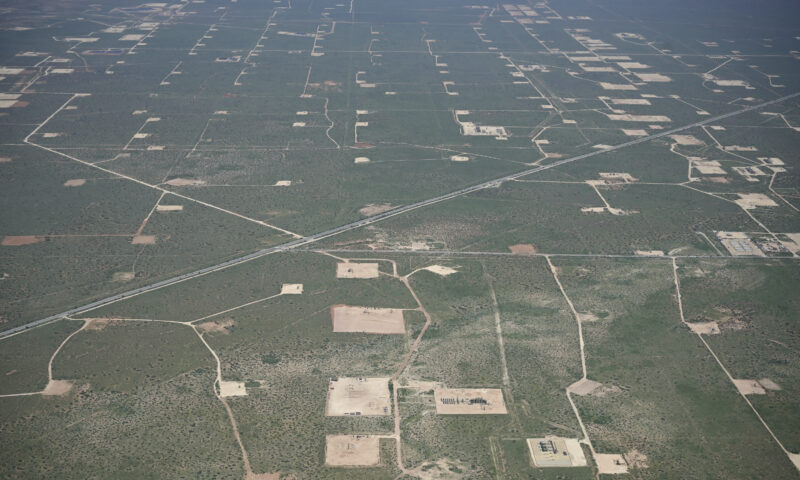Climate Change
California’s Market-Based Plan to Protect Tropical Forests
Selling credits for forest protection hasn’t worked before. Why does the state’s air board think it will now?

This past June 17, four members of the California Assembly sent a letter to the California Air Resources Board, granting cautious blessing to the air board’s proposal for saving the world’s tropical forests. That proposal, the California Tropical Forest Standard, was crafted over the last decade by air board staff and would set guidelines to improve the integrity of tropical forest-based carbon credits. Currently sold worldwide to people or companies that want to voluntarily compensate for their own emissions by protecting the world’s rainforests, such credits replace punitive regulations with financial incentives. Instead of forcing landowners to preserve forests with laws, forest-based carbon markets reward them with cash.
Forest-based carbon offset programs—especially the international ones—have a complicated history. The United Nations’ program, Reducing Emissions From Deforestation and Forest Degradation (REDD), has not only paid to preserve forests that were later destroyed, it’s also been accused of intensifying poverty and encouraging graft without making a dent in global climate pollution. For that reason, California hasn’t allowed polluters in the state to use forest-based carbon offsets as credits toward their regulated emission limits, or “caps,” under the state’s greenhouse-gas reduction program, cap-and-trade.
Nevertheless, many experts, including some environmental groups, regard forest-based offsets as an essential tool in the climate fight. “We don’t solve the climate-change challenge without solving deforestation,” Chris Field, director of the Stanford Woods Institute for the Environment, said in a conference call with reporters. “It’s a must have.” The revenue from tropical forest credits, he added, not only incentivizes local governments and landowners to not exploit forests for profit, it can also help offset “the most difficult-to-reduce emissions, from things like aviation or manufacturing.”
Currently selling for anywhere from $3 to $40 per metric ton of carbon averted, forest-based carbon offsets on the voluntary market are a simple and relatively inexpensive way for eco-minded corporations to brand themselves as carbon neutral, or for celebrities to advocate for the environment without mothballing their private jets. Plants and trees are powerful carbon sinks. One tree absorbs as much as 50 pounds of carbon dioxide per year, and if that tree lives for 50 years, it stores a whole ton. Which means forest offsets theoretically do what the experts say needs to be done: Not just reduce greenhouse gas emissions but pull back from the atmosphere what we’ve already put there.
The problems arise in verifying what’s known as the “permanence” of forest investments. Political regimes change, fires burn, mining and ranching pushed out to save one stand of trees move elsewhere and destroy another. In a letter dated August 13, state Sen. Bob Wieckowski (D-Fremont) warned that if California certifies a carbon offset scheme for tropical forests—even one that serves only the voluntary market — the state’s climate leadership could become associated with “human rights abuses and other social harms.” The standard would also lead to a “landslide of false credits,” he wrote, paying to protect forests that were never threatened in the first place, or funding conservation plans that are all too soon reversed.
The ongoing tropical forest offset program that the air board uses as a model, in the Brazilian state of Acre, has been touted as a developed, verifiable effort. Yet from 2017 to 2018, Wieckowski notes, 83 percent of Acre’s forests were cut down.
* * *
Such troublesome results may never be known by the well-intentioned buyers of forest offsets, who invest their faith in third-party aggregators of carbon offsets, such as Cool Effect and Carbon Footprint, who manage multiple offset programs for prospective buyers. The sellers themselves may not have a handle on the accuracy of their offsets. Tree science is inexact: It’s impossible to calculate precisely how much carbon a given forest sequesters. It’s also hard to monitor what happens after the offsets are sold and the money has been paid out. In an influential investigation into forest offsets by Lisa Song and Paula Moura that appeared in ProPublica last spring, satellite imagery of a 4-year-old forest offset project found that half the area was deforested. “Ultimately,” they wrote, “the polluters got a guilt-free pass to keep emitting CO2,” without actually saving the plants and trees.
Song and Moura also found that small rural farmers who had historically subsisted on forest resources were paying a high price for preservation. Raising cattle on cleared land brings in a steady income. Tapping rubber from standing trees does not.
The nihilistic presidency of Jair Bolsonaro hasn’t inspired faith in Amazon forest protection offsets, either. “Look at how much of our own national environmental rules are literally going up in smoke under President Trump,” Wieckowski wrote in an email to Capital & Main. “What gives us assurances that we can count on foreign regimes that are constantly changing?”
To be clear, the Tropical Forest Standard was written to address those legendary issues, says Christina McCain, director of the Environmental Defense Fund’s climate program for Latin America. “It relies on verification,” she says. “It spells out how the verification is conducted, what science justifies it, and that governments provide annual transparent information and data.” It also requires independent third-party verification, so carbon banks aren’t just taking a government at its word.
“It isn’t based simply on good feelings and trust,” McCain says, “but evidence, science and factual information.”
* * *
None of that has been enough to win over Wieckowski, who admitted that he’s “not a believer in offsets” at all as a solution to the climate crisis. “We need to cut greenhouse gas emissions [at their source],” he wrote in his email, “not participate in carbon accounting gymnastics.” Carbon offset and credit programs in general, he said, “allow companies to avoid installing improved emissions reduction measures” while touting themselves as compliant and green.
Nor is it enough to satisfy many environmental justice advocates, who have seen asthma rates continue to rise among children who live near refineries while oil companies tally up points for cutting pollution in far-away places. Katie Valenzuela, policy and political director for the California Environmental Justice Alliance, doubts that California even has the capability to ensure whether the new standard performs as intended. That letter from the four assemblymembers in support of the Tropical Forest Standard was full of caveats, she says. And those concerns have yet to be addressed.
Valenzuela, who says she wrote that letter, traveled to Acre in 2017 with the Assembly delegation while serving on Assemblymember Eduardo Garcia’s staff. “I think it’s important,” she says, “to know what that letter really said.”
Far from giving the “green light” to the air board to endorse their Tropical Forest Standard, as the Environmental Defense Fund’s blog posts and other news outlets have claimed, the Assembly letter was only a conditional approval, Valenzuela says. “What it said was, ‘If you’re going to do this, you need to make sure that you can monitor this, because we feel like there’s a lot of questions that have not been adequately answered.’”
Soon after the letter was written, Valenzuela says she became convinced that air board staff lacked the resources to verify whether the requirements of the Tropical Forest Standard would be met. Effective monitoring would require the tools Song and Moura used in their ProPublica investigation—not just satellite data, but local people enlisted to ground-truth the results. The air board isn’t dedicating any additional staff or resources to verification. And without those, she doesn’t see how the Tropical Forest Standard is going to be any better than the programs that have gone before it.
“Say you had some money in your personal savings, and I was asking you to invest in a program that not only had never worked before, but actually had pretty strong indicators that it was hurting people and communities,” says Valenzuela. “But I was like, ‘No, trust me, this time, we’re going to figure it out.’ Would you give me your money?”
Dave Clegern, spokesman for the Air Resources Board, says that the staff scientists who work on the standard took numerous critiques, including ProPublica’s, to heart when they drew up the rules. As a consequence, the Tropical Forest Standard “doesn’t deal with individual projects” the way other programs have. “It scales these efforts up to the national or subnational level,” he says, “and goes to great lengths to bring the indigenous and other forest communities into the design and planning.” Local community autonomy “is a key piece of how the standard works.”
The California Air Resources Board meets on Thursday, September 19, to vote on whether to endorse the Tropical Forest Standard. There may not be any perfect calculus to guide their decision-making, but “uncertainty,” says the Environmental Defense Fund’s McCain, “is not a reason for inaction.” Any climate effort that tackles deforestation has got to address the underlying problem in forest preservation, which is that “there are economic drivers and incentives to cut down the forests.” Sticks, in the form of regulations, have their place. But carrots, in the form of incentives, “are incredibly important, too.”
Valenzuela remains unconvinced. “The Tropical Forest Standard is the easy way out,” she says. “It gives us the feeling that we’ve done something when we’ve really done nothing.” She notes that almost half the crude oil extracted from the Amazon flows into California refineries, according to the nonprofit Amazon Watch. “If we really want to have a conversation in California about what we can be doing to help the Amazon, we have to have some tough conversations. And those are the conversations that are avoided by talking about the Tropical Forest Standard.”
Copyright Capital & Main

-

 Column - State of InequalityNovember 28, 2025
Column - State of InequalityNovember 28, 2025Santa Fe’s Plan for a Real Minimum Wage Offers Lessons for Costly California
-

 Latest NewsDecember 8, 2025
Latest NewsDecember 8, 2025This L.A. Museum Is Standing Up to Trump’s Whitewashing, Vowing to ‘Scrub Nothing’
-

 Striking BackDecember 4, 2025
Striking BackDecember 4, 2025Home Care Workers Are Losing Minimum Wage Protections — and Fighting Back
-

 The SlickDecember 2, 2025
The SlickDecember 2, 2025Utility Asks New Mexico for ‘Zero Emission’ Status for Gas-Fired Power Plant
-

 Latest NewsDecember 1, 2025
Latest NewsDecember 1, 2025Accountable to No One: What 1990s L.A. Teaches Us About the Trump Resistance
-

 Dirty MoneyDecember 3, 2025
Dirty MoneyDecember 3, 2025Trump’s Anti-Climate Policies Are Driving Up Insurance Costs for Homeowners, Say Experts
-

 Child FarmworkersDecember 5, 2025
Child FarmworkersDecember 5, 2025To Protect Underage Farmworkers, California Expands Oversight of Field Conditions
-

 Column - State of InequalityDecember 4, 2025
Column - State of InequalityDecember 4, 2025Can California Claw Back Some Medi-Cal Care?

